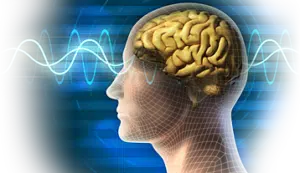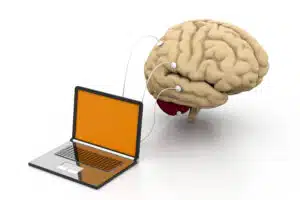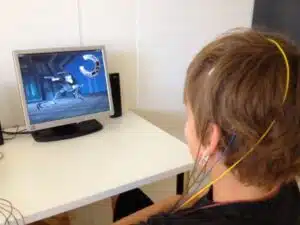Parents, are you fed up?

Every year, it seems as though there is a new statistic showing how ADHD diagnoses are increasing in the United States. Now that we know more about the disorder, it is easier to pinpoint the symptoms and intervene with children experiencing inattention, hyperactivity, and impulsivity.
Medication, mainly stimulants, is recommended as the number one treatment option for ADHD. The best treatments involve a combination of medication, therapy, and behavioral interventions.
Some parents, however, do not want to medicate their child. Medications can cause a whole host of side effects. While they are taken to affect a specific area of the brain, medication can impact other areas of the body as well.
Stimulants increase dopamine stimulation but they can cause side effects that affect other parts of the body. Children on medication can experience sleep issues, irritability, anxiety, fatigue, and other physical symptoms.
Hmmm…. have you tried Neurofeedback for children with ADHD?
Sometimes it seems everything your trying is not working. The medication and behavioral interventions are “fine” but they do not work long term or sometimes do not work at all.
Or maybe, you want to add something new to the mix of treatment that involves “teaching” your child’s brain new tricks. A new promising intervention that is garnering support is known as Neurofeedback!
Neurofeedback is a treatment which focuses on “training” a brain to focus and pay attention. The goal of this intervention is that the brain should learn on its own how to become more attentive. By learning to stay focused and attend, one can actually teach their brain to “actively listen” and increase fast brain wave activity.
What happens in session one of Neurofeedback?
In this intake session, participants have electrodes attached to their heads as they watch a video, play a game or pay attention to a screen. During this time, an EEG records their brainwave patterns to measure their brain activity and compares it with what a “typical” brain wave pattern should be (of a non-ADHD person).
Typically, people with attentional issues and ADHD have abnormal brain wave patterns: they are either processing information too slowly or too quickly. This means that their brains are being over-active (fast brain waves) or under-active (slow brain waves).
The EEG recording taken in the first session shows the clinician the mapping of the patient’s brain wave patterns and color codes where activity or inactivity is occurring.
The end goal of all neurofeedback sessions is to match the individual with ADHD’s brain wave patterns to what an attended/focused brain wave pattern looks like.
Session two and beyond- Neurofeedback Treatment
In the next sessions of neurofeedback, electrodes are attached to a participants head as they play a computer game, watches a show or pays attention to a picture on a screen.
If they lose focus or stop paying attention to the task, their EEG recording shows this increase in slow brain wave activity and their computer game, show or picture pauses or blurs.
The only way for a participant to get the video or picture to continue or un-blur is for them to concentrate and focus again (increase brain activity). This is a sign to the participant that their brain needs to focus, once they start to concentrate the brain wave pattern is normal again.
Studies on Neurofeedback :
Neurofeedback has been found to be successful compared to other treatment options in alleviating ADHD symptoms in children. However, being that it is a newer treatment option, there remains far less literature on neurofeedback than on other methodologies such as therapy and medication.
Regardless, there remains a vast amount of people with personal stories of how neurofeedback was extremely effective in improving their child’s ability to focus. There are examples of parents who did not want to use medication or wanted to try this in combination with other treatments that have boasted of the results. More research definitely needs to be conducted to prove that neurofeedback can be effective without medication in treating children with ADHD.
Quick……Remember:
- Neurofeedback requires 20-40 sessions, about half hour to forty minutes each.
- It can be quite pricey with parents spending up to $3,000 on this treatment option! Definitely, take this into account and be sure to find the most viable treatment option for your child 🙂

